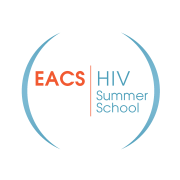
About Juan Ambrosioni
I’m an infectious disease specialist originally from Argentina. However, I’ve been working in Europe since 2008. I began undertaking various endeavours in Geneva, Switzerland in 2008. Around 2013, and after a brief period in Madagascar, I moved to Barcelona where I joined the HIV Unit and Infectious Disease service at the Hospital Clinic-IDIBAPS, a large tertiary hospital.
As a clinician, I attend to both ambulatory and hospitalised patients in the ID department, alternating my clinical work with teaching and research activities. My main research topics include antiretroviral therapy, novel treatment strategies and opportunistic infections (mainly TB) and co-infections, such as COVID-19 in individuals with HIV. I am still deeply involved in research and capacity-building activities in developing countries—more specifically, sub-Saharan Africa—where the HIV/AIDS burden is the highest.
I’ve been a member of EACS for approximately a decade and became involved in the EACS Guidelines in 2017 (v9.0) as a young scientist for the Opportunistic Infections panel. I am also involved in other EACS activities, such as the HIV Summer School.
What are the EACS Guidelines?
The EACS Guidelines is a document updated yearly aimed at providing easily accessible and comprehensive recommendations to professionals involved in all aspects of care of people living with HIV. These guidelines came about in 2005, introduced by the European AIDS Clinical Society (EACS). The Guidelines are organised by ‘Panels’ to make accessing information easier. The ultimate aim of EACS and EACS Guidelines is to reduce the HIV burden across Europe and improve the quality of life of people living with HIV. The EACS Guidelines should not be seen as a replacement of other sources of information. Instead, the Guidelines consist of a single document that highlights essential knowledge required for managing all HIV-related topics.
Why are the EACS Guidelines important?
EACS Guidelines are relevant for several reasons. First, there is widespread representation from both professionals across Europe and community members.
In addition, the EACS Guidelines cover ART and all relevant aspects of co-morbidities and co-infections. This includes recommendations for some clinical conditions for which no specific guidelines are available in some countries.
Moreover, the EACS Guidelines consider capacity differences and limitations of health systems across Europe, thereby providing a general framework with which specific countries may use to adapt their recommendations per the national situation. Large and inclusive representation across Europe is particularly relevant when we consider the difficulties that have arisen in HIV (and other diseases) care due to the COVID-19 pandemic and, in more recent times, the war in Ukraine.
Finally, the EACS Guidelines are available in several languages, making it an accessible and easily understandable source for health and care professionals from around the world.
What are the expected updates in the EACS Guidelines for this year? What are the challenges for the years to come?
Major revisions are presented every two years at the European AIDS Conference, whilst minor revisions take place at the HIV Drug Therapy Conference in Glasgow during the “in-between” years. 2022 is a “minor revision” year, so to speak, so the EACS Guidelines will only include extremely relevant and time-sensitive changes.
Given the amount of new, emerging information in the last few months, the COVID-19 section within the Opportunistic Infections and Co-morbidities panels is expected to be updated. Also, considering that long-acting therapies will be commercially available in different European countries this year, we can foresee an update on this topic within the ART panel. Finally, we will seek to harmonise the EACS Guidelines with other international guidelines as it relates to specific conditions, particularly some of those discussed in the Co-morbidities panel.
A major challenge for the EACS Guidelines is how to build upon user-friendliness and promote easier access to such necessary information. For some topics, the amount of new relevant data increases with the day and that must be included. However, this can lead to a document that becomes larger and larger with each updated version. From a practical perspective, this is an important issue to consider when healthcare professionals need to quickly find information.
Further, quality of life is the fourth component to be added to the 90/90/90 (or 95/95/95) strategy in HIV care, which means that another major challenge will perhaps consist of how to address this need uniformly across the whole document. This becomes particularly relevant when we think about building an appropriate ART regimen that could guarantee an undetectable viral load, as well as persistence over time with mild or no side effects. By the same token, means of drug administration and dose intervals are equally important. Lastly, several specific topics discussed in the Co-morbidity section will need to reflect on the current need of extremely high standards for quality-of-life care for people living with HIV.

20th European AIDS Conference
15-18 October 2025 Paris, France

EACS Guidelines updated
The EACS 12.1 and the app are available for free on



Educational Programme
Training and educating the next generation of clinicians and researchers is an EACS core activity.

EACS Resource Library
Access all scientific content of EACS core activities! (members only)

Interim Guidance
Interim Guidance on the Use of Statin Therapy for the Primary Prevention of Cardiovascular Disease in People with HIV